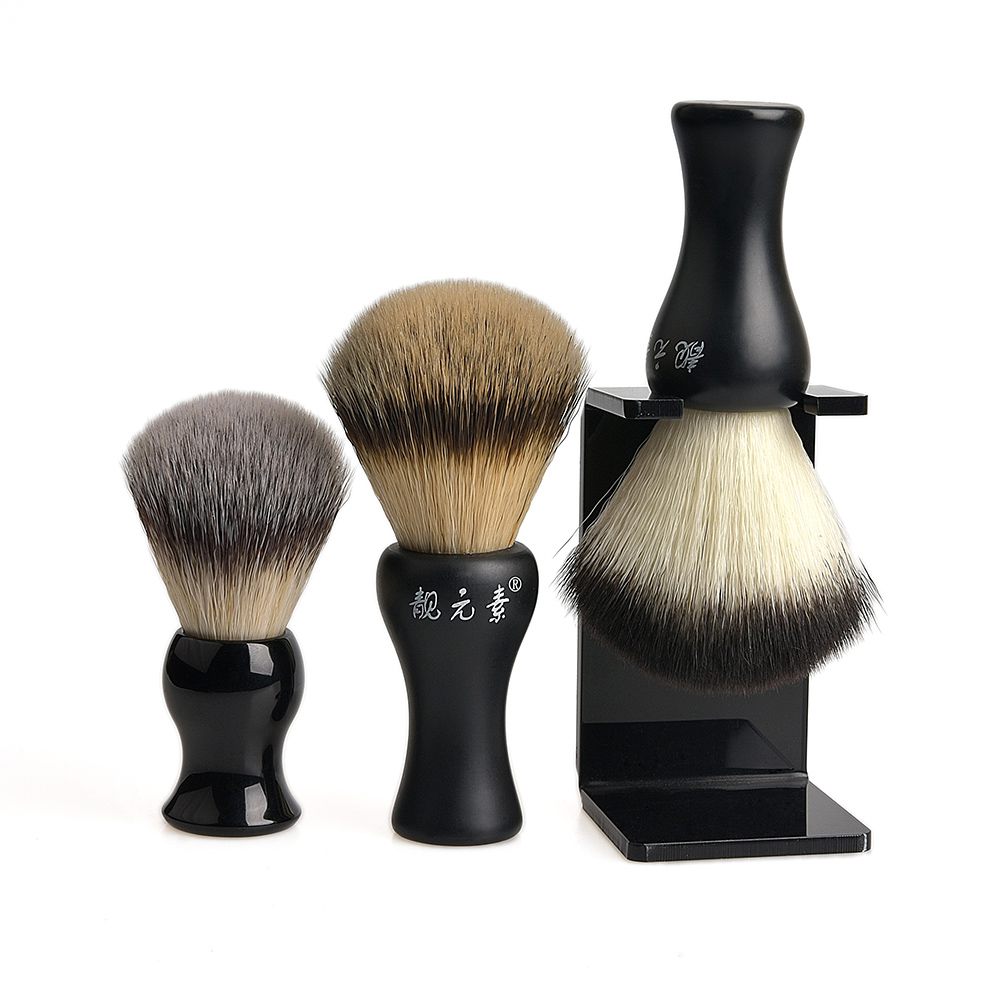Industry news
New Shaving Brush Materials: Beyond Badger and Boar Hair
- 630 Views
- 2025-09-19 02:32:17
New Shaving Brush Materials: Beyond Badger and Boar Hair
For over a century, badger and boar hair have reigned supreme in the shaving brush industry. Renowned for their ability to lather richly, retain warmth, and glide gently across the skin, these natural fibers became synonymous with luxury and tradition. Yet, as consumer values shift toward sustainability, animal welfare, and supply chain resilience, the industry is undergoing a quiet revolution: the rise of innovative new materials that challenge the dominance of badger and boar. This explores the cutting-edge alternatives reshaping the future of shaving brushes, their technical advantages, and why they matter for both manufacturers and users.
The Limitations of Tradition: Why Badger and Boar Hair Are Being Reimagined
Badger hair, particularly "silvertip" grades, has long been prized for its ultra-soft texture and water retention—key for creating thick, creamy lathers. However, its production is fraught with ethical and practical challenges. Badger populations are declining in some regions, and sourcing often involves trapping or farming, sparking concerns over animal cruelty. Supply is also erratic: badger hair quality varies by season and geography, leading to price volatility and inconsistent product quality.

Boar hair, while more affordable and durable, presents its own issues. Coarser than badger hair, it can irritate sensitive skin, and its rigidity reduces lather quality compared to finer fibers. Like badger hair, boar hair relies on livestock farming, which faces scrutiny for environmental impact (e.g., water usage, methane emissions) and supply chain disruptions (e.g., disease outbreaks in pig populations).
Against this backdrop, manufacturers are turning to synthetic fibers, plant-based materials, and recycled textiles—not just as "alternatives," but as superior solutions tailored to modern needs.

Synthetic Fibers: Engineering Softness and Performance
Synthetic fibers, once dismissed as "inferior" to natural hair, have undergone dramatic advancements. Today’s high-tech synthetics—often made from modified nylon (e.g., Nylon 6, Nylon 66) or polyester—rival badger hair in softness while outperforming it in durability and hygiene.
Key innovations include:
- Microfiber Technology: Ultra-fine synthetic fibers (0.5–10 microns in diameter) mimic the hollow structure of badger hair, enhancing water absorption and lather retention. Brands like Italy’s Omega and Germany’s Mühle use "Silvertip Synthetic" fibers with a tapered design, where tips are finer than traditional synthetics, reducing skin irritation.
- Antimicrobial Coatings: Fibers infused with silver ions or zinc oxide inhibit bacterial growth, addressing a major flaw of natural hair (which can harbor mold or bacteria in damp conditions). This extends brush lifespan and improves hygiene—critical for users with acne-prone skin.
- Cost and Consistency: Unlike natural fibers, synthetic production is controlled and scalable. Prices are stable, and fibers can be engineered to precise specifications (e.g., stiffness, density), ensuring every brush performs uniformly.
Consumer adoption is growing: A 2023 survey by ShavingStats found 42% of new brush buyers now prioritize synthetic options, citing "ethical peace of mind" and "low maintenance" as top reasons.
Plant-Based Fibers: Sustainability Meets Functionality
For eco-conscious consumers, plant-based fibers offer a renewable alternative to both animal hair and petroleum-based synthetics. Derived from crops like bamboo, coconut, and hemp, these materials align with the "circular economy" trend, as they biodegrade or compost after use.
- Bamboo Fiber: Bamboo’s natural antimicrobial properties and high water absorption make it ideal for shaving brushes. When processed into microfibers, it becomes surprisingly soft—comparable to boar hair but gentler on skin. Brands like The Art of Shaving’s "Eco Bamboo Brush" use bamboo charcoal-infused fibers, which enhance lather by attracting soap molecules.
- Coconut Coir: Harvested from coconut husks (a waste product of the coconut industry), coir fibers are durable and naturally water-resistant. While coarser than bamboo, they excel in creating dense lathers, making them popular for "heavy lather" shaving soaps. Dutch brand Schorem Barbershop’s coconut coir brush has gained a cult following for its eco-credentials and long lifespan (up to 5 years with proper care).
- Hemp Fiber: Hemp’s strength and natural oil-repellent properties reduce soap buildup, keeping brushes cleaner longer. When blended with cotton, hemp fibers become softer, striking a balance between rigidity and gentleness.
The tradeoff? Plant-based fibers require careful processing to avoid brittleness. For example, bamboo must undergo enzymatic treatment to break down lignin, ensuring fibers remain flexible during use. Despite this, demand is surging: The global plant-based personal care market is projected to grow at 11.2% CAGR through 2028, with shaving tools as a key segment.
Recycled and Upcycled Materials: Closing the Loop
Sustainability isn’t just about "natural"—it’s about reducing waste. Recycled materials, such as rPET (recycled polyethylene terephthalate) and recycled nylon, are gaining traction as brands aim to cut their carbon footprint.
rPET, made from recycled plastic bottles, is melted down and spun into fibers that rival virgin synthetics in performance. Brands like Harry’s and Rockwell Razors use rPET fibers in their entry-level brushes, marketing them as "10 plastic bottles saved per brush." These fibers are lightweight, quick-drying, and resistant to mildew—perfect for travel brushes.
Recycled nylon, often sourced from discarded fishing nets (via initiatives like OceanCycle), offers similar benefits with added environmental storytelling. A 2022 study by the Sustainable Apparel Coalition found that recycled nylon reduces carbon emissions by 70% compared to virgin nylon, making it a hit with eco-aware consumers.
The Future: Blends and Bioengineered Fibers
The next frontier lies in hybrid materials—blending synthetics, plant-based fibers, and recycled textiles to optimize performance. For example, a blend of bamboo microfibers and recycled polyester could combine softness, sustainability, and durability.
Bioengineering is also on the horizon. Companies like Bolt Threads are developing lab-grown "mylo" fibers (made from mushroom mycelium) that mimic animal hair’s texture without ethical concerns. While still in early stages, these bio-based synthetics could one day offer the "holy grail"—natural-like performance with zero animal or environmental impact.
Choosing the Right Material: A Guide for Consumers
With options multiplying, how do users decide? Consider:
- Ethics: Vegan or animal-welfare-focused? Opt for synthetics or plant-based fibers.
- Sustainability: Prioritize recycled or biodegradable materials (e.g., rPET, bamboo).
- Skin Type











